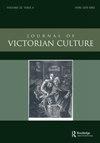Erskine Nicol and the representation of national and religious identities in nineteenth-century Ireland
IF 0.5
3区 历史学
Q2 HISTORY
引用次数: 0
Abstract
Abstract This article investigates the visual representation of Irish Catholicism in mid-nineteenth century genre painting through a close analysis of St Patrick’s Day (1856), a picturesque genre painting by the Scottish artist Erskine Nicol. In doing so, it will explore why artists like Nicol, Frederic William Burton and others chose to equate Irish rural Catholicism with romantic ideas of nature and outdoor ‘primitive’ worship. This tradition of representation will be examined in the context of contemporary Catholic institutional expansion across Ireland following the removal of the legal disabilities known as the ‘penal laws’ in 1829, and the parallel emphasis on the church building as the location of worship, the sacraments, and Catholic devotional life. To date, scholars of Nicol’s oeuvre have tended to focus on Nicol’s representation of an Irish national ‘type’ or ‘character’. My reading of Nicol’s St Patrick’s Day, however, aims to extend the art historical investigation of the signification of the Irish stereotype in Victorian painting, and to examine Nicol’s painting within the interwoven frameworks of national identity and religious identity. This analysis of St Patrick’s Day is rooted in a consideration of both genre and historical context, facilitating new insights into ideas of ‘peasant’ or ‘primitive’ Catholicism as central to mid-Victorian representations of the Irish ‘national character’.厄斯金·尼科尔以及19世纪爱尔兰民族和宗教身份的表现
摘要本文通过对苏格兰画家厄斯金·尼科尔创作的风景画《圣帕特里克节》(1856年)的细致分析,探讨了十九世纪中期爱尔兰天主教在风俗画中的视觉表现。在此过程中,它将探讨为什么像尼科尔,弗雷德里克·威廉·伯顿和其他人这样的艺术家选择将爱尔兰农村天主教与自然和户外“原始”崇拜的浪漫思想等同起来。在1829年废除了被称为“刑法”的法律残疾之后,当代天主教机构在爱尔兰的扩张背景下考察了这种表现形式的传统,同时强调了教堂建筑作为礼拜、圣礼和天主教虔诚生活的场所。迄今为止,研究尼科尔作品的学者们倾向于关注尼科尔对爱尔兰民族“类型”或“性格”的表现。然而,我对尼科尔的《圣帕特里克节》的阅读,旨在扩展对维多利亚绘画中爱尔兰刻板印象意义的艺术史调查,并在国家认同和宗教认同的交织框架内审视尼科尔的绘画。对圣帕特里克节的分析植根于对流派和历史背景的考虑,促进了对“农民”或“原始”天主教作为维多利亚中期爱尔兰“国民性”代表的核心思想的新见解。
本文章由计算机程序翻译,如有差异,请以英文原文为准。
求助全文
约1分钟内获得全文
求助全文

 求助内容:
求助内容: 应助结果提醒方式:
应助结果提醒方式:


